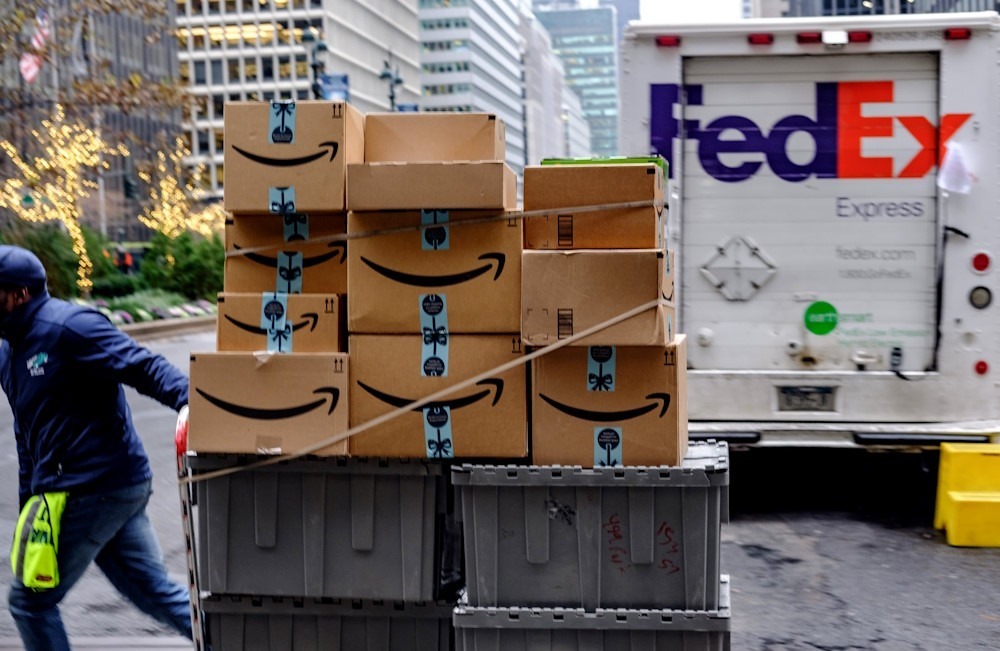Collaboration Talks Emerge Between FedEx and Amazon

Following their public breakup, FedEx and Amazon.com have discussed expanding their commercial partnerships.
Someone familiar with the situation said that last year, the two firms discussed FedEx taking Amazon package returns at its retail sites, which would have given the delivery giant a cut of the transaction. To manage the millions of returns it receives every year, Amazon has partnered with other businesses, including United Parcel Service, a competitor of FedEx.
Even if they couldn’t come to terms, the developments coincide with FedEx’s efforts to increase package volumes in the face of a dip in the industry and Amazon’s drive to enhance the return process for customers.
Last spring, when Amazon started charging some customers a charge to return items to UPS locations, negotiations with FedEx also began.
With thousands of return drop-off locations and agreements with other merchants, Happy Returns was acquired by UPS in October for $465 million. By completing the merger, UPS was able to diversify its customer base and lessen its reliance on Amazon for returns.
Prior to UPS’s acquisition, Happy Returns accepted packages at FedEx Office locations; however, they no longer accept such packages. Returns from Amazon cannot be dropped off there.
When FedEx, then headed by founder Fred Smith, announced in 2019 that it would terminate delivery contracts to transport Amazon’s boxes, tensions between the two companies started to rise. Ever since then, FedEx has been actively courting other businesses to load their trucks and planes with their packages.
Since the online retail behemoth was establishing its own delivery capabilities at the time, FedEx perceived Amazon as a rising competitive danger. To deliver packages to consumers, Amazon’s ground network, like FedEx’s, employs local contractors.
Dave Clark, who was Amazon’s SVP of operations at the time of the announcement, characterized the split as a “conscious uncoupling at its finest.”
The split was a risk for FedEx back then, and ever since then, Amazon’s daily shipping demands have skyrocketed. As far as online retail sales in the United States are concerned, eMarketer believes that Amazon takes up the lion’s share, at roughly 40%.
Amazon is now less dependent on third-party logistics providers like FedEx and UPS because to its extensive investments in its own network. As of 2022, Amazon had supplanted the century-old UPS as the leading non-governmental carrier of packages in the United States. In 2020, it surpassed FedEx, according to The Wall Street Journal.
It is common knowledge that depending on a single consumer can be risky. UPS has expressed a desire to lessen its reliance on Amazon, yet the agreement continues to generate a significant portion of its revenue. The percentage of UPS’s revenue attributable to Amazon increased from 11.3% to 11.8%, or around $11 billion, last year.
In 2018, Amazon contributed less than $1 billion, or 1.3%, to FedEx’s overall revenue. Even though they have their own warehouses, some sellers who use Amazon’s marketplace still have FedEx transport their products.
FedEx is currently engaged in a battle for customers as demand declines following a surge caused by the virus. Year over year, FedEx has seen a decline in daily package volumes for multiple consecutive quarters. It reorganised its business to merge its air and ground networks, which led to the loss of planes and furloughs of employees.
Quarterly results for the package delivery behemoth are expected to be released on March 21.










